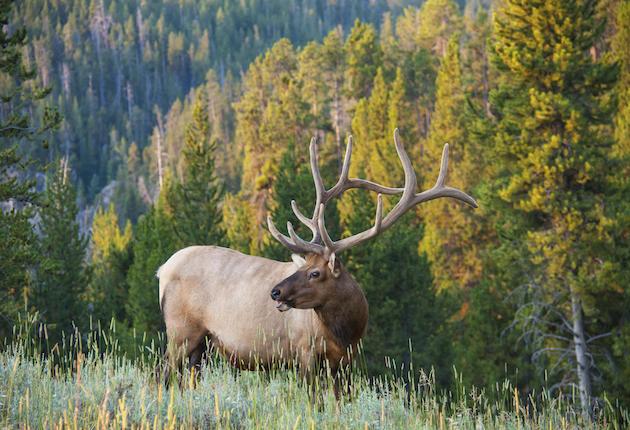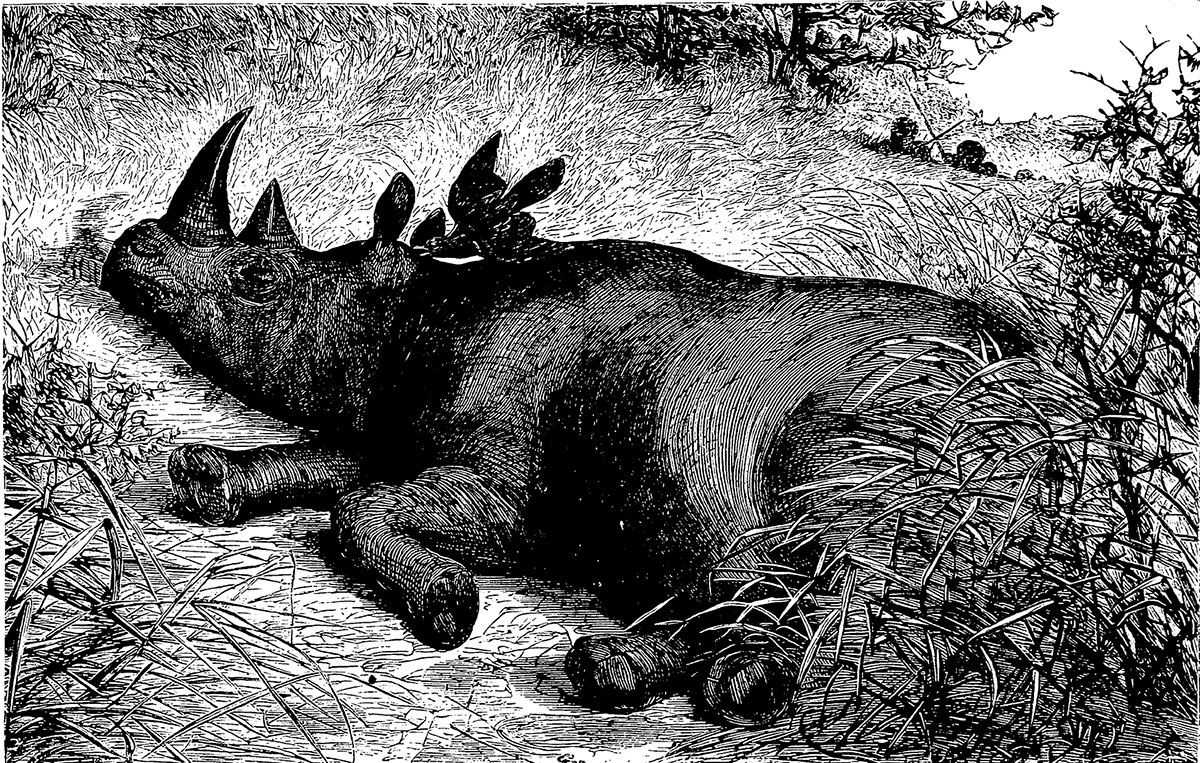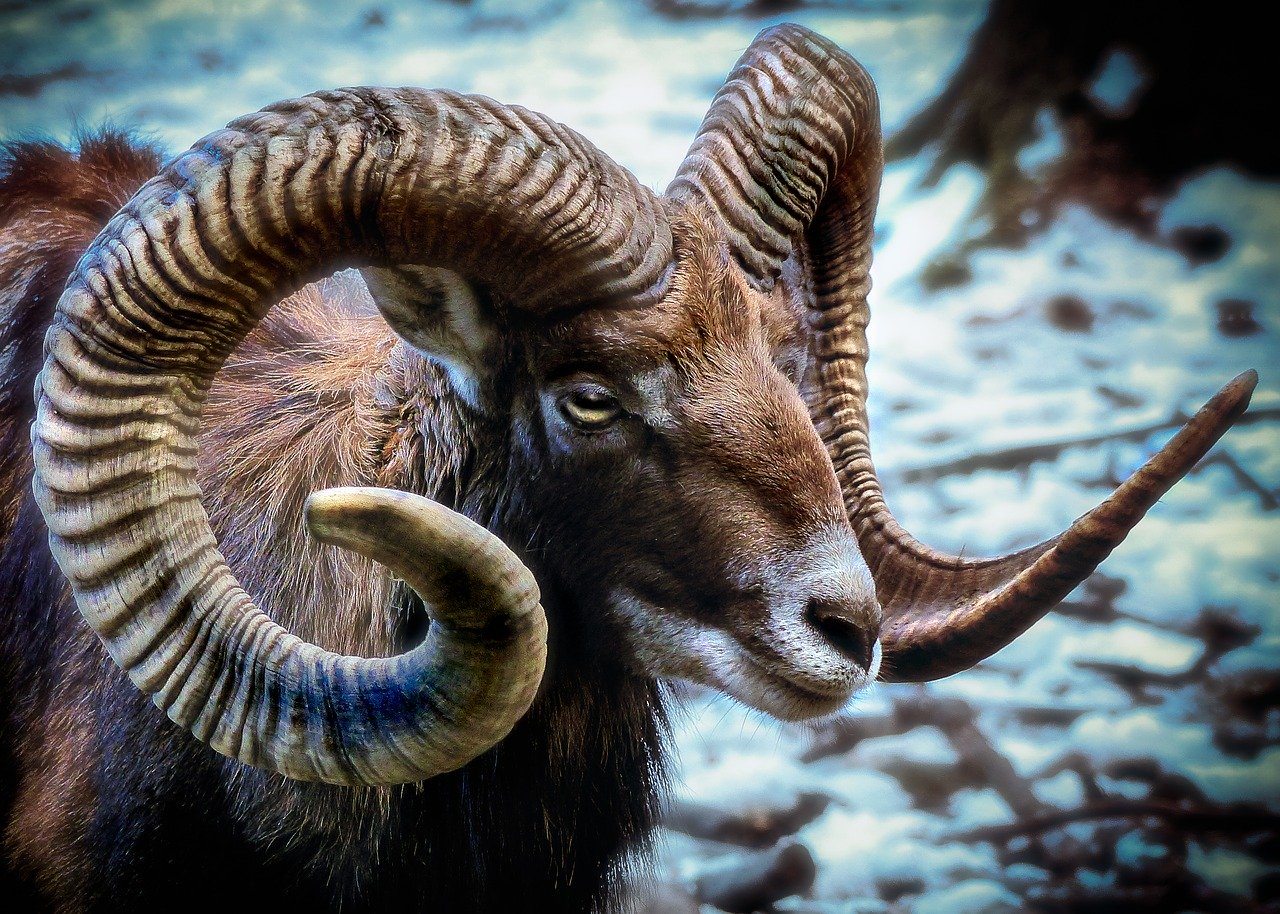I heard bugling faintly in the distance as we stepped out of the woods. My guide, Werner, and I had just reached the grassy top of the mountain. Our camp was deep down in the forests of the Kootenay, not far from Cranbrook, British Columbia.
I was still in a fog from the two days of travel from Pittsburgh when an elk called nearby. I whispered to Werner, “So that’s what a bull elk sounds like.”
It was opening day for elk.
We had begun our hike up the mountainside early that morning. The going was steep; the mountain still blanketed in a cold, damp mist. Werner had reconnoitered the area prior to the start of the season, and had chosen this particular deer trail after spotting elk sign on it.
We hiked for an hour or more. Werner’s pace was brisk and the trail offered no respite in the form of switchbacks. My rifle, a Remington Model 700 in 7mm Remington Magnum, was loaded with 160 grain soft points. It weighed on me, constantly forcing me to adjust the sling’s position or alternate shoulders.
We trudged a more few steps and surprised a small coyote. He glared at us, took a few sniffs, and trotted away with an absence of fear. The high, grassy plateau had a savannah-like feel to it, but it was crisply cold, our breath forming a billowy haze. The sky was overcast and a light but biting breeze was blowing.
This was hunting ground far different than I had experienced elsewhere in the West. The leaves of the deciduous trees had begun to turn even though it was only late summer. The open areas had thick grass that vied for life against the tangled underbrush and evergreens. One could become interminably lost in these woods by just wandering a few steps off the trail.
A bull’s bugling interrupted the stillness, followed by more silence. Then the calls came more frequently, almost with a sense of urgency. Werner loosed several calls in response. This aging German World War II veteran was able to emit a grunt eerily similar to that of our elk, even though the slinky rubber call looked like the hose from an old Hoover vacuum.
The bull was moving around, sometimes dozens of yards at a time. Werner and I stood still, sometimes exchanging glances, the wonder of the moment charging the two of us. As the minutes passed, the bull’s shouts became more expressive, a bullyboy mantra, calling out an unseen foe for possessing the harem he craved.
He began moving towards us quickly and without any sign of wariness. Werner whispered that it was time to find a place to hide.
A quick recon suggested we position ourselves on the far side of the plateau, several yards into the thick woods that marked the beginning of a hillside. We would have the uphill advantage with the wind in our faces. Werner nestled into the brush a few yards behind me, while I sat cross-legged next to a small tree. There was no time to find a better position.
The calling indicated he was closing quickly. The intervals between calls became shorter, like a conversation becoming more comfortable. There was no question that the bull wanted to find the source of the calling. As he approached our ambush, Werner increased the frequency of his calls, modulating them from a guttural bellow to a shrill pitch of a whistle, and then ending with a hollow grunt. The bull slipped through the woods, then thrashed trees two or three times, giving me a chance to relieve the cramps that had accumulated from sitting inertly.
I could feel the energy in the bull’s calling. We were downwind of him and his musky scent drifted our way. He mostly slipped through the forest in silence, issuing occasional threats to his challenger by thrashing his antlers against brush and small trees. Then there was silence again.
A call sounded twenty or thirty yards from the last thrashing. The space between us closed rapidly, to within maybe fifty yards. How did he move in total silence through the clotted brush with antlers possibly four feet in length?
A vague glimpse of his right front leg finally appeared, followed by the hazed-over outline of his chest and near shoulder. He wasn’t going to reveal himself until his challenger was seen.
My body hadn’t experienced stillness like this. I took shallow breaths and only blinked when my eyes began to glaze; fully aware that my slightest movement could send this bull crashing through the woods in blind panic.
I followed the line of his right front leg to his chest and shoulder, but the brush continued to obscure him with each step. A slight turn of his head revealed his eye. He directed his gaze away from me, revealing the top line of his neck and then his antlers. The gauge of the near antler and two tines suggested a big bull.
Ever so slowly, I raised my rifle in search of a one shot kill. Another hesitant, seemingly levitated step and his right shoulder was unveiled. My view through the scope found an uncluttered path to a point behind his shoulder.
I mustered every ounce of self-control I had. I had to fight the urge to move quickly, to jerk the trigger, to become too excited. Sometimes in the past I had been so anxious that every protocol was abandoned–no slow squeeze of the trigger, too much fixation. Simply stated, buck fever. Not this time.
At the report of the rifle, he fell where he stood. The bullet, launched at 3,000 feet per second, had dealt its hand. When the gunshot echo faded, Werner cautioned, ”Sit still, don’t prod him into flight until his last breath.” The bull didn’t stir, so we abandoned our position to approach him.
I could hear his labored breathing from a few feet away. He didn’t lift his head, but his eyes were searching. I drew near him from behind in case he lunged. He must have seen me or scented me as he began to strain. I expected him to stand up, so I raised my rifle and took a few steps nearer. I could see that his feet weren’t gathered beneath him.
Then he began to bawl—a heartbreaking, raspy sound. He was too handsome for the indignity of a headshot, so a final bullet to the chest provided the mercy blow.
My sense of triumph withered as he slipped away. I have only become distraught over a big game kill two or three times in my life, this certainly one of them. His beauty, stealthy grace, and proud carry all impressed themselves on me in these tense final moments. I kneeled next to him. He had lived a simple, natural life; even in death, he projected the image of a timber monarch.
The reflective moment passed and the excitement of fulfilling my lifelong dream of an elk hunt resurfaced. The beauty and serenity of the fallen bull was the culmination of a mixture of chance and skill. I had killed the bull its true, but in doing so, somehow, we had both become more alive.
Werner stepped cautiously on the steep hillside towards a young juniper and cut two small branches. He kneeled near the bull and dipped one branch in the bull’s blood, then gestured that I slip it into my hatband on the right side.
“The sign of a successful hunt. Schützenbruch, the hunter’s branch,” he said to me. Then he placed another in the mouth of the bull. “Letzter bissen, the last bite,” he said. “A gesture of respect.”
Cover image: Thinkstock

Gamefield Classics features beautiful photography by William Headrick with text by Michael McIntosh on more than 35 different shotguns and more than 25 rifles. A big 9 by 12-inch book, Gamefield Classics features more than 70 beautiful photographs and McIntosh’s insightful text on more than 35 different shotguns and 25 different rifles.
Michael McIntosh is the world’s most highly respected firearms writer; William W. Headrick stands alone at the pinnacle of firearms photography. Out of this unique collaboration comes a unique collection of stories and photos, all from the pages of Sporting Classics magazine. Here you’ll find a wide range of sporting shotguns and rifles built by an equally wide range of makers. All are classics in their own way. Some are pristine examples, others show the signs of much loving use and care. Here you’ll find history—of the makers and in some cases of the guns themselves. All have a story to tell. Buy Now




